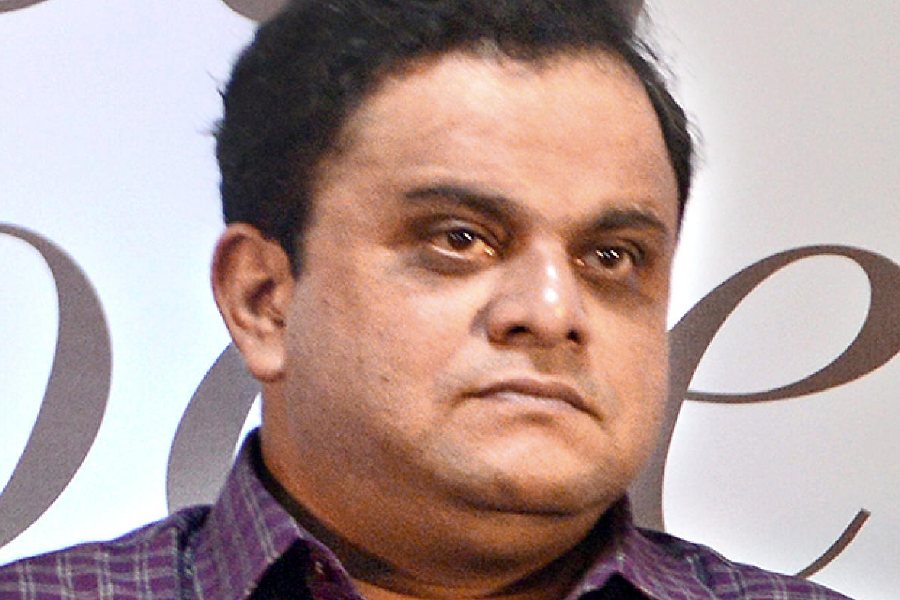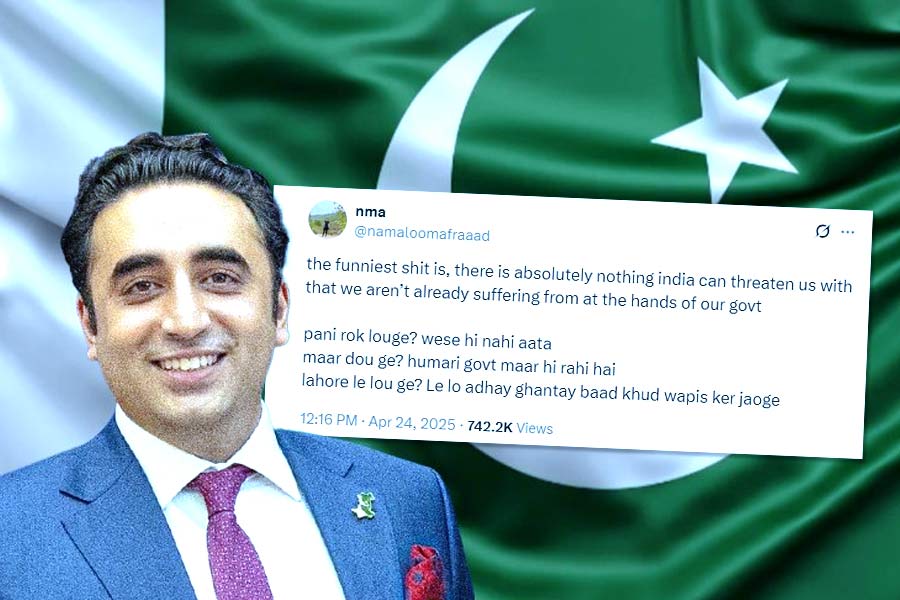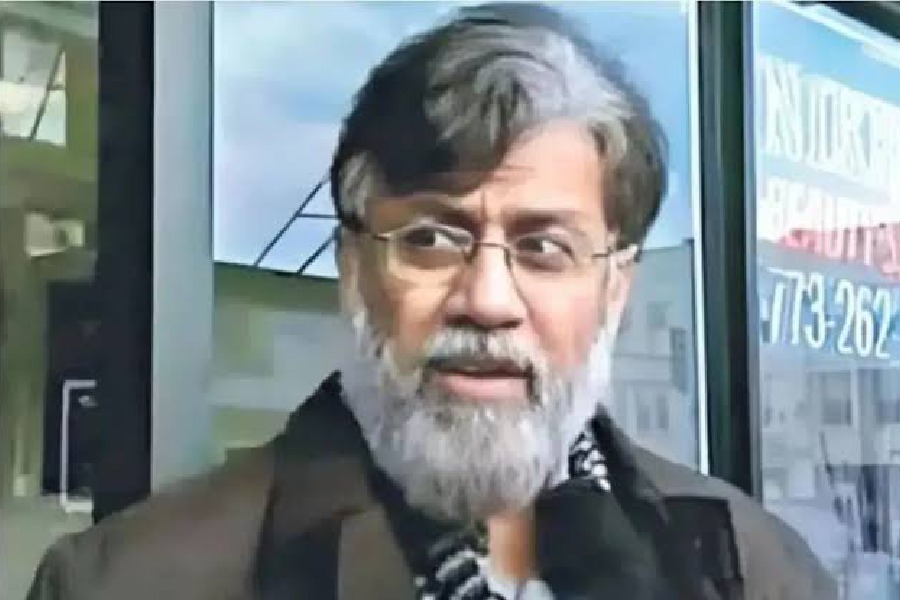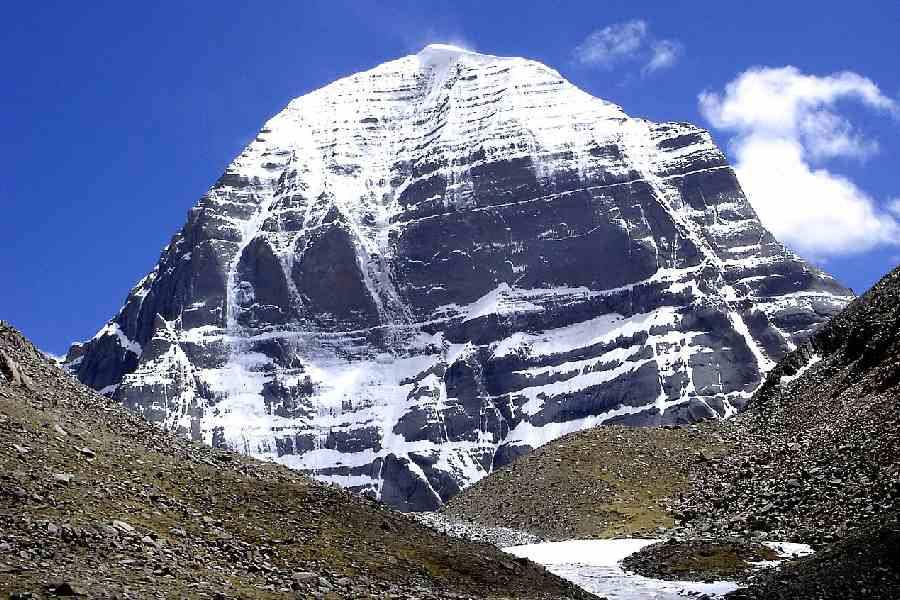 |
| Armed Maoists on the road between Bhimpur and Lalgarh before the police action began. (Samir Mondal) |
The enemy’s enemy is always a friend and both the CPM and the Trinamul Congress had courted the Maoists to fight their war on various battlegrounds — from Keshpur-Garbeta to Nandigram and Lalgarh — in the past 10 years.
The relations of Bengal’s two main contenders for power with the Maoists soured only when the extremists crossed their paths to enforce their own political agenda.
Way back in 1998, the CPM had found “communist brotherhood” with the People’s War Group, one of two constituents of the CPI (Maoist), when the ruling party was engaged in a bloody turf war with the Trinamul-BJP combine in the Keshpur-Garbeta region of West Midnapore.
According to Maoist sources, the CPM and the People’s War had reached an “understanding at the local level” after activists of the Trinamul-BJP combine killed relatives of rebel leader Asit Sarkar to avenge the murder of a BJP leader.
“CPM members in the villages who had also been facing the Trinamul-BJP onslaught invited our squad to join them. They offered shelter, food as well as ammunition. We went for joint action,’’ recalled a Maoist leader.
Two men were said to be instrumental in this episode. One of them was Koteshwar Rao, better known as Kishanji. The media-savvy Maoist now in Lalgarh was then the People’s War politburo member in charge of Bengal and adjoining states.
While the Maoist sources said Kishanji had resented the “tactical understanding” with the CPM and Trinamul, other Naxalite groups like the PCC CPI(ML) insisted that he had not only approved but also taken active part in implementing it. Ideological grandstanding apart, all generals resort to dirty tricks and unholy alliances, they argued.
The other person was the pyjama-clad CPM strongman, now minister for western region development, Sushanta Ghosh, who had allegedly solemnised the short-lived CPM-Maoist deal.
He denies it now. “I had no relations with them. Since they were also facing Trinamul-BJP attacks, some of their leaders had approached us for a joint resistance to avenge the killing of their family members. But we chose to work independently. Their leaders later went for an alliance with the Trinamul-BJP against us,’’ Ghosh said.
The CPM-Maoist bonhomie turned into a bloody fight as the equation changed with the threat of the Trinamul-BJP turf takeover receding and the rebels trying to spread their influence at the cost of the CPM. In the new equation, the vanquished Trinamul sought Maoist assistance to take on the CPM’s armed forces.
“This time, some Trinamul men were inducted into our squad and given arms training,’’ a Maoist leader said.
Such a Trinamul-Maoist joint squad was ambushed by a CPM gang at Chhoto Angaria village on West Midnapore’s border with Hooghly and Bankura in 2001, effectively wip- ing out the armed resistance to the CPM’s stranglehold on the region.
Chhoto Angaria made the Maoists fierce foes of the CPM and Trinamul inched closer to them. In Nandigram, Mamata Banerjee’s party let the Maoists operate when it was still competing with the Congress, Jamait Ulema-i-Hind, SUCI and others for control of the Save Farmland Committee.
The CPM said the Maoists were active in Nandigram since January 2007. The Trinamul camp insisted that the gue-rrillas had nominal presence there before the police took the help of CPM cadres to launch an offensive on March 14.
“Since the resistance (to the police-CPM combine) needed armed support, the Maoists started imparting arms training to local youths at Sonachura. They were also in the Save Farmland Committee but we never allowed them to dominate us and managed to rein in their over-enthusiastic men by speaking to their higher leadership,’’ said a member of the Trinamul think tank.
But tension between the two sides mounted as both pressed for their own political agenda as the election season neared. “The Maoists started campaigning for a vote boycott and insisted on resisting the CPM’s armed onslaught in November 2007 with arms. But we feared it will spin out of control and focused more on electoral politics and resistance forms suitable to the polls since we knew popular support was with us,” a Trinamul leader said.
The Maoist squad later left the area accusing the mainstream Opposition of not supplying arms and ammunition as promised, he added.
The CPI (Maoist) leadership later blamed Trinamul for sacrificing the potential of the Nandigram resistance as the spearhead of the anti-special economic zone (SEZ) struggle for electoral gains.
In Lalgarh, too, all anti-CPM forces joined hands under the People’s Committee Against Police Atrocities as popular anger mounted against police’s illegal detentions, arbitrary arrests, night raids and beating of innocent people in the name of tackling Maoists.
The anger exploded after the police brutalities on women following the blast on the chief minister’s route last November.
The committee drew its strength from elected village representatives across Lalgarh.
According to sources close to the Maoists as well as Trinamul, Jharkhand Party factions led by Aditya Kisku and Babu Bose, pro-Jharkhand Party Naxalite outfits such as the one led by Santosh Rana as well as the mainstream Opposition parties participated in the committee.
While committee spokesman Chhatradhar Mahato was in Trinamul, its president Lalmohan Tudu was with the Aditya group and vice-president Santosh Patra a CPM rebel. Secretary Sidhu Soren was a greenhorn in politics in comparison.
As the committee barred political parties and groups from asserting their own identity, the Maoists, active in the area for long, also joined the forum. However, sources said they were not a dominant force initially in the 45-member central body of the committee.
Although Trinamul had a nominal presence in the area, Mamata saw potential in the committee and attended its rally supporting its agitation.
However, tension began as the Maoists started dictating terms to the activists from the Jharkhand Parties, Trinamul and the Congress and the bitterness led to mutual killings in some cases.
According to Trinamul leaders, the Maoists had asked the anti-CPM forces to field one candidate together to ensure the ruling party’s defeat in the Lok Sabha polls in the region. Trinamul had no problem with this as the party had conceded Jhargram to the Congress, but the Jharkhand Party factions did not agree.
The Maoists retaliated by extending the poll boycott in the entire area while Mamata and the other anti-CPM forces accused them of helping the CPM win by huge margins from Jhargram, Ghatal, Bankura and Purulia despite its eroding base among tribals.
With Maoists determined to ensure their supremacy in the Lalgarh and expand their base, the Trinamul camp is now bitter that the rebels ultimately dished out Buddhadeb Bhattacharjee and his party a chance to recover from its worst poll debacle by inviting the Centre-state joint crackdown.
Kishanji questioned Mamata’s “class character” and accused her of failing to return the favour extended in Nandigram and not standing up against the Centre’s involvement in operation Lalgarh.
With Bhattacharjee and Mamata now engaged in one-upmanship over the ban on the Maoists, the guerrillas count both among their enemies, hated in equal measure.










